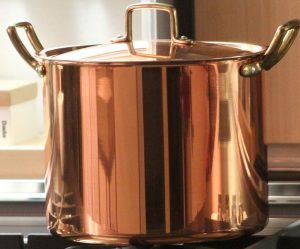Copper
This type of metal material is a conductor. It evenly distributes heat throughout the surface of the pan and this makes the food uniformly cooked. The downside of copper is that it reacts to acidic or alkaline food that can give a metallic taste after being cooked.

Aluminum
These are of two types. The anodized and regular aluminum. Anodized aluminum is sturdy, durable and more scratch resistant than the regular. The regular aluminum is cheaper and lightweight. It also retains heat. It is easy to clean. The disadvantages of the aluminum is that it can discolor when put in the dishwasher, it can buckle in high heat and it easily scratches.
